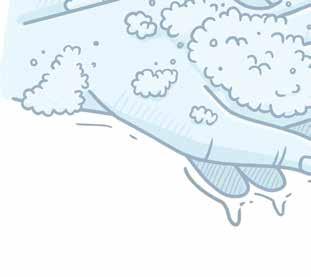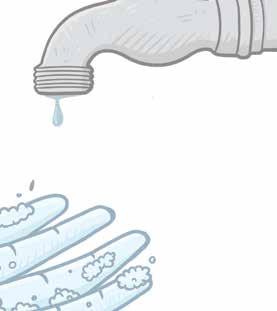
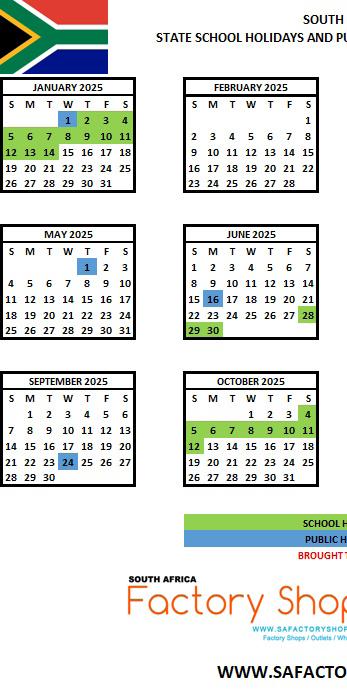















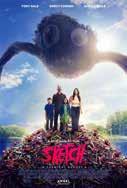

We are back!
It took a little while to get evrything sorted. No easy task, but it is now done and you wil be able to enjoy your favourite magazine: Hola MaHigh-School.
We have a new writer: Happiness Mutsitsa. A warm welcome. Read her article about peer pressure and learn.
Careers? more on aviation. This time cabin crew and flight nurse jobs. There is more to all of this.
And the thing we really must know: Allan Gray Orbis Foundation High School Scholarship. Applications are now open so get on with it!
We have received articles Avbob: Launch of 2025 Guides.
Nadia Hearn: Turning Trash
Innocomm: Real Stuff for for Life, Not Just Exams.
Clockwork Media: Avoid job as cabin crew.
There are some ‘fun’ ones
Food in space? Believe Finding nuggets at the Original Magna Carta? Good read!
Hola is here to give you a break from all We are also serious, but it is now called
articles from: Examination Preparation
Trash Into Treats for Success: Equipping Learners Exams. Avoid mistakes when applying for a ones as well: it or not! library: unknown Shakespeare? Believe it or not.

all the school stuff. called edutainment.
Sybil Otterstrom Editor and CEO
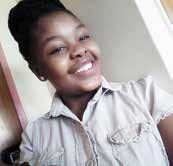
Want to be a contributor? Wanting to write like a pro?
You CAN!
look firther and see how you can become one.
... and it is a good feeling to entertain and inform.
Masiziba Hadebe has her Master’s in Agricultural Economics from the University of the Free State (UFS). She has been a consistent contributor buthas now moved into ‘business’. Ahe is now at FNB working in their agricultural division. We miss her! She believes you can wear a smile whatever the weather!
My name is Lerato Pitso. I am from Maseru, Lesotho. I am a Sociology and Criminology student at UFS and Miss Supranational Lesotho 2023. When I’m not a model and a student, I write about my philosophies on life as well as expressing my feelings on paper. I hope that my views will aid in the social development of the next person.

And we are honoured to also have industry-views from:
Edith Wynne-Trollip: - Curriculum Support and advise, Overberg District
Nadia Hearn - Founder of Get-Published
Ashalia Maharajh: - Founder & Director, Sivuka Consulting (Pty) Ltd
Thozamile Mvumvu: - CFE Programme Manager, False Bay TVET
Daniel Roos - Account Executive, Transform Marketing



I am Happiness Mutsitsa, a 23 year old student, pursuing a degree in Education. I reside in North West, Rustenburg. I am passionate about writing and art. I find joy in paintings and learning more about the details within paintings and drawings I am also an author and having my book on Amazon.
My name is Molatelo Kate Kgatla, I’m 24 years old. I was born and raised in Lenyenye. I’m a grade 2 teacher at Vunza Teddy Bear Learning Academy, an author of a book titled her jouney as a young mother. I became a mother at 17. It influenced me to write about my personal journey to try and help someone that could be going through the same. I love writing and I love my 7 year old daughter and life.


Lesly Malose Mahapa is a singer/writer/poet. He started writing at the age of 14 and has since been on a journey to pursue his music and writing career. Lesly is currently working with an indie group ‘MozSouth’ based in Ivory park, Midrand. Lesly is also a brand ambassador for a local clothing line “Boi Boi apparel”

Editor
Sybil Otterstrom
sybil@romele.co.za
Advertising sales
Next
011 614 5046
076 360 1792
sybil@next-level.co.za
Publishing
Eleanor street
2094 011 614 5046/076 360 1792
Enquiries
Romele


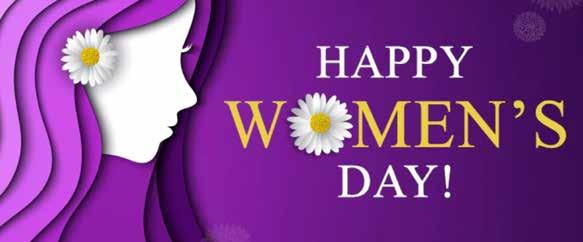
Women’s Day is one of the more important days in the South African calendar. There are many things we can reflect on and a lot of it is sorely needed.

We may think that we have arrived in a better societyt, but look around: see GBV and chauvinism rearing its ugly head.
It is not just ‘out there’ or confined to certain environments. It is within famlily, school or workplace.
That is why it is still relevant with Women’s Day. Embrace it and reflect on the changes we as a society should make.
There are many initiatives out there. It is a lot more than just ‘celebration’. it can be a reality where we stand up to unjust practices and change it.
Let us ue the day for recognising wht can and must be done and then put it into reality.
That will be a worthy celebration.

Women’s Day is having a long history. It is not just something new that came around after UN recognised Women’s day in 1977.
It is something very different from Mother’s day. Mother’s Day has many good intentions. There we are looking at saying ‘thank you’ to the mothers across the globe that brought up the nations.

Mother’s Day has no sharp edge, but Women’s Day has.
What time frame are we talking about? And what were the issues?
We look at the 1900s. Sure enough, women in general (across the globe really) did not have the right to vote, could not own property or sign business deals, could not enrol at university, could not …. A plethora of things.
So what changed? The industrial revolution which required a lot more industrial workers. Women got out of the house and into the factories.
As more women got to be bread-winners and acting in their own right (not just a companion to a husband), the demand for recognition was sharpened.
1909 saw the first ‘Women’s Day’ (USA) and it was soon followed with the International Women’s day - from 1910 and onwards.
First World War saw the entire established order of ‘society’ being turned upside down. Social changes were demanded and equality was on the agenda. The first major obstacle (and victory) was the right to vote.

Society again changed after Second World war. Women were suddenly to be found as soldiers or factory workers or business owners and in essence; as individuals in their own right. And the rights to go with it were indeed demanded now.
The laws of the countries changed (by and large). Equality as we see it is enshrined in the constitutions around the world.
But we can ask ourselves: is it enough?
The theme for Women’s Day according to UN is “Generation Equality”. It does point out that equality is not achieved in all countries. There are still pockets of oppression.
South Africa’s constitution guarantees an equal society. However, one thing is the law another is culture and tradition. And that is where we as South Africa should now look.
Do we still see a male-dominated environment? Do we still see malejobs and female-jobs? Do we see differences in salaries based on gender? Do we see gender-violence?

This is where attitudes in society must change to reflect the intentions of law.
… and that is why Women’s Day is still relevant!
It may seem a bit strange. What is it about being able to vote? Well, it is the general participation in determining where the society is moving. To have a say in the future. This is the importance of democracy and equal rights in the broadest context.
But what is the track record of that?

We need to get beyond WW1 for seeing any major movement towards change in voting rights.
Be aware as well, that although democracies were emerging in the 1800’s, the voting rights were typically limited to men. On top of, they had to have a certain income or be property owners. That removed the right to vote from the majority of people. The process was not only about women voting. That notion of ‘one man, one vote’ was just not enacted before we got much later as well.
It is therefore important to not see this in isolation. The whole (European) development of democracy also encompassed women voting.
So let us therefore turn to this aspect. Wiki says:
“Most independent countries enacted women’s suffrage in the interwar era, including Canada in 1917, Britain in 1918 and the United States in 1920. Leslie Hume argues that the First World War changed the popular mood:
The women’s contribution to the war effort challenged the notion of women’s physical and
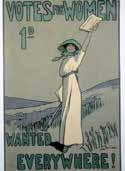

mental inferiority and made it more difficult to maintain that women were, both by constitution and temperament, unfit to vote. If women could work in munitions factories, it seemed both ungrateful and illogical to deny them a place in the polling booth.
But the vote was much more than simply a reward for war work; the point was that women’s participation in the war helped to dispel the fears that surrounded women’s entry into the public arena”.
The years leading up to WWII saw the majority of countries enacting women voting. The rest was by and large done with in the years just after WWII.

Wiki: “The United Nations encouraged women’s suffrage in the years following World War II, and the Convention on the Elimination of All Forms of Discrimination Against Women (1979) identifies it as a basic right with 189 countries currently being parties to this Convention.
PS: The last place to grant women voting was the canton of Appenzell Innerrhoden. It is the smallest canton of Switzerland by population. It was the last Swiss canton to grant women the vote on local issues, in 1991.


We all want to fit in and be accepted, but sometimes that desire comes with a price. Peer pressure plays a powerful role in shaping behaviour, especially among those of the same age group. It can sometimes lead to bullying- a harmful and intentional act of aggression that inflicts pain on others.

Peer pressure and bullying are challenges that many learners face every day. Both can have significant stress, emotional, mental and social impact.
Bullies target others for different reasons. Some seek control and power, believing it makes them stronger while others act out due to personal struggles at home including violence and harsh discipline. That in turn leads them to express their frustrations through aggression.
Peer pressure has serious negative effects on victims, impacting their mental health, behaviour and overall well-being.
Many learners end up experiencing low self-esteem and insecurity as they struggle to fit in and meet the expectations of their peers.

It requires confidence and support to stand up against peer pressure and bullying in school. When facing bullying, it is important to speak up, and as a learner avoid engaging with bullies, as they often seek a reaction. Instead walk away from them with confidence. Building self confidence and staying true to your values will make it easier to resist negative influence.
Parents, teachers and society play an important role in preventing peer pressure and bullying by creating a supportive and safe environment for children.
Open communication at home allows children to share their experiences without fear of judgment. Teachers on the other hand can help by promoting kindness and implementing strict anti-bullying policies and encouraging inclusive classroom discussion.
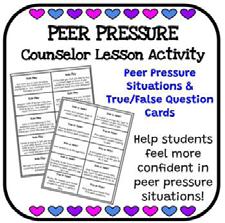
Peer pressure and bullying are powerful social forces that can have lasting effects on learners. But why do we let the need for approval turn into something harmful? It is time to recognize the power of peer pressure and stand up against bullying before it does more damage.


For many young people, becoming a cabin crew member is more than just a job. It marks the start of a life-changing adventure. It is a chance to see the world from every angle, meet new people from all walks of life, and elevate travellers’ journeys along the way.

But, before even taking to the skies, there is an important first step: getting through the application process.
Each year, thousands of talented young people apply to become cabin crew members, but some miss out on the opportunity due to small, avoidable mistakes. To help you get off to a flying start, consider these common application mistakes and how to avoid them.
However excited you are about the opportunity, make sure to read through the requirements carefully. While it is tempting to just hit ‘Apply’, cabin crew roles come with very specific requirements, from physical criteria to language skills and customer service experience.
When you are sure you qualify for the position and understand what the
role involves, then you’re ready to apply. Life as a cabin crew member can be incredibly rewarding, but it also demands flexibility, resilience, and a genuine love for people.
2. Tailor your CV for the position
Your CV is your personal introduction – a look at who you are and the personality behind it. By submitting one that is generic and not designed for a cabin crew role, you can make it harder for recruiters to see why you would be a great fit.
When putting your CV together, make sure to highlight your strengths in areas like customer service, teamwork, communication, and cultural awareness. Think about how your experience, even from part-time jobs or volunteering, can translate into skills needed on board.

3. Include a professional photo
Where many applicants miss the mark is using casual holiday snaps or selfies which may not create the right impression. Remember, this is a professional job and snapshots of you lying by the beach are not going to help recruiters picture you in the role.
Instead, choose a clear, professional headshot with good lighting and a neutral background. Dress in business attire, smile naturally, and present yourself as you would on an actual
4. Do not overlook the details
Attention to detail is vital when working in aviation. That is why small errors in your application, like incomplete forms, missing documents, or not following guidelines, can give the wrong impression. Always double-check everything before you submit your application.
When you apply with all your documents accounted for, it will show the recruiter that you follow instructions and are organised, reliable, and ready for the responsibility that comes with the role.

The assessment day is a chance to show who you are. Not just on paper, but in person. Arriving unprepared or underdressed can affect your confidence and your chances of making a good first impression.

Prepare for the day by dressing smartly and paying attention to grooming (clean and tidy hair and nails, light makeup, etc.). How you present yourself should reflect the professionalism that the role requires.
You will also be required to mingle with the team, so do some research about the airline’s values and be ready to show how you align with them. And most importantly, bring your enthusiasm and warmth.
A common misperception is that airlines will bring you on board based on personality alone. That is just one part of what they are looking for. Airlines want to know that you understand the role and what it takes to succeed in it.

Take time to learn about the airline and the realities of cabin crew life. Think of examples where you have handled challenges or provided great service and be ready to share why this role matters to you.

Cabin crew members do more than just hand out meals and bring travellers pillows. They should know how to handle diverse situations with empathy, professionalism, and grace. It is key when showing that you are a good communicator, an attentive listener, and a caring team player. These qualities are just as important as technical knowledge.
Your journey starts long before you wear the uniform. Every interaction — from your CV to your interview — is an opportunity to show that you are ready to represent one of the world’s leading airlines.

Avoiding these common mistakes will help you stand out for the right reasons and bring you one step closer to turning your dream into reality.
“At Emirates, we welcome applications from passionate individuals who are ready to deliver exceptional service and represent our airline with pride.

Preparation, attention to detail, and a positive attitude go a long way. We encourage aspiring cabin crew to embrace every step of the process as part of their journey toward an exciting and rewarding career in aviation” – Afzal Parambil, Regional Manager, Southern Africa.

More careers in the aviation industry - so you thought being a nurse is easy? all from here
A flight nurse is a specialized healthcare professional trained to provide acute care to patients during aircraft transportation, such as helicopters or airplanes.

These nurses often work in tandem with flight medics, pilots, and other medical personnel in aerial environments. Flight nursing plays a critical role during medical emergencies, especially in remote or inaccessible areas, ensuring patients receive vital care as they are transported to healthcare facilities.
This unique nursing specialty combines elements of emergency care with the challenges posed by air travel, demanding adaptability, precision, and in-depth knowledge from its practitioners. If you’re currently looking for a Nurse position, please take a look at our Flight Nurse vacancies.
These nurses are responsible for the assessment, stabilization, and ongoing treatment of patients during air transport. They initiate life-saving
procedures, administer medications, and ensure patients’ safety and well-being in-flight. Given the often-cramped quarters of medical aircraft, these nurses must efficiently use space and equipment.
They collaborate with other onboard medical staff, communicate with the receiving facility to prepare them for the patient’s arrival, and provide emotional support to patients and their families during stressful transports.
Beyond the primary role of attending to patients in air transports, they also explore opportunities in leadership within air medical programs, roles as flight nursing educators, or consultants in aeromedical equipment companies.
They may transition to related specialties like critical care or emergency nursing with a unique set of skills. Furthermore, experienced flight nurses might find opportunities giving lectures, attending international conferences, or contributing to research in flight nursing best practices.

Choosing flight nursing offers multiple benefits. The dynamic nature of this specialty ensures every day is different, offering continual learning experiences. Flight nurses often derive satisfaction from knowing they bridge the critical gap between remote areas and advanced healthcare facilities.
This specialty also offers competitive salary packages, reflecting the unique skills required. Additionally, flight nurses gain unparalleled experience that can be advantageous in other high-intensity nursing specialties, with the added perk of getting to travel and work in diverse environments.

Flight nursing, while rewarding, comes with its challenges. The unpredictable nature of medical emergencies means erratic work hours. Flight nurses must also quickly adapt to varying conditions, from confined spaces to atmospheric pressure changes.

The emotional toll, especially when dealing with critical patients in challenging situations, requires resilience. There’s also the consideration of physical fitness, given the demanding nature of the job.
To become a flight nurse, one typically needs a Bachelor of Science in Nursing (BSN) and an RN license. Experience in critical care or emergency nursing is often required before transitioning into flight nursing.
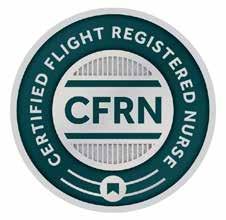
Several certifications, like the Certified Flight Registered Nurse (CFRN), may also be mandated by employers. Additional training in aviation safety, survival training, and specific equipment usage are usually provided by the employing agency.


Knowing yourself and your capabilities


For you to pursue your career choice.
You need to pass your National Senior Certificate!

“ it is in your hands “
- Nelson Rolihlahla Mandela


The Eastern Cape Department of Education encourages learners to choose suitable career path, by collecting information that will help them pursue their career / field of study.
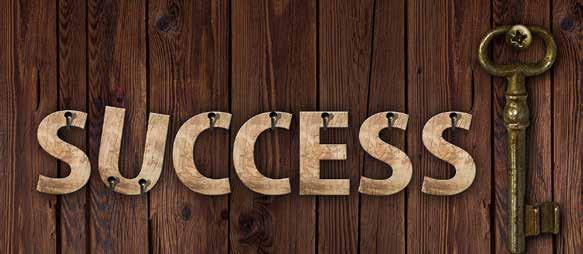
In today’s evolving world, education is about more than just academics. To thrive, learners need confidence, resilience, emotional agility, and life skills to serve them both in and outside the classroom.

At The Love Trust’s Nokuphila School in Thembisa, a meaningful partnership with Real Stuff for Success brings these tools directly into the hands—and hearts— of learners.
Founded by Candice Preston, an experienced teacher and passionate coach, Real Stuff for Success blends Study to Thrives’ whole brain learning methods, emotional intelligence training, and Money Savvy Human’s financial literacy skills into a powerful programme showing life-changing results in schools across South Africa.
At the heart of the programme is Study to Thrive, which uses whole-brain learning techniques grounded in neuroscience. It’s not just about what learners know, but how they absorb, apply, and retain that knowledge.
“We want to demystify learning,” explains Silas Pillay, Director of Academics at Nokuphila. “Whole Brain Learning equips learners with strategies for critical thinking, memorisation, exam prep, reading and comprehension—and it helps them enjoy the process.”

Importantly, these methods are designed to build confidence. Many learners at Nokuphila come from communities where self-esteem and emotional intelligence are still developing. By helping them experience small, consistent successes, Real Stuff for Success nurtures self-belief and a love for learning.
“Where you come from doesn’t have to determine where you’re going,” Pillay affirms. “When learners believe they can, they start to engage with school and life differently.”
“EQ is the heart of learning,” says Preston. “It shapes how we connect, respond to stress, and how we stay motivated.”
Real Stuff for Success incorporates Positive Intelligence techniques (based on the work of Shirzad Chamine), helping students shift from fear-based thinking to calm, focused decision-making. The result is better resilience, better stress management, and improved academic performance.
Pillay agrees. “There’s a direct link between emotional intelligence and results. When learners can stay calm under pressure, manage their time and work smart, not just hard, they’re more likely to succeed. But EQ also plays a massive role beyond the classroom, especially in interview settings where confidence and self-presentation matter.”

Through the Money Savvy Humans programme, learners are introduced to financial literacy as early as Grade 4. Using storytelling, games, and role-play, they learn the difference between needs and wants, how to save, budget, and eventually manage real-world finances.

“Even younger learners in the foundation phase can begin to grasp basic money concepts,” says Preston. “It’s about laying strong foundations for habits that will empower them to make informed decisions for the rest of their lives.”
Pillay reinforces this by encouraging the integration of these skills across the curriculum: “Teachers can weave financial literacy into literacy, numeracy, and life skills lessons. Activities like setting up a pretend shop make learning feel relevant and fun.”
The programme’s impact isn’t theoretical. At Alexandra High School, where Study to Thrive partnered with Ocular Technologies, the matric pass rate jumped from 34.3% to 65.4% in just one year.
This success was due to the whole-school approach: engaging not only learners but also teachers to adopt more effective strategies and build confidence. “In my opinion,” says Pillay, “there’s no such thing as a child who is unable to learn—only a teacher who hasn’t discovered how to reach that child.”
That’s why teacher training is also a key focus. Through helping educators understand different learning styles and multiple intelligences, the programme creates lasting change that extends well beyond a single term or subject.
With exam season looming, both Preston and Pillay emphasise the importance of preparation—not just academically, but holistically.
Study in short, focused bursts. Stay relaxed and reinforce learning through active recall and teaching the material to someone else. Plan your study times and tackle tough subjects first. Give yourself the advantage of time, and do not neglect the power of idle time (waiting for transport, etc.) that can be used to cover small sections. Sleep, hydration, and nourishing meals are brain fuel.
Limit distractions, offer breaks, and keep the environment supportive. Praise progress and perseverance, not just the final mark. Ask your child to explain their work to you, it’s a powerful way to cement learning.
At Nokuphila, Real Stuff for Success is more than a partner. It’s a catalyst for meaningful change, building a generation of learners and teachers who are emotionally intelligent, financially literate, and confident in their abilities.
“Knowing is not enough,” reiterates Pillay. “We must do. That’s what makes learning stick.” Thanks to this powerful programme, learners at Nokuphila are not just being prepared for exams, they’re being prepared for life.

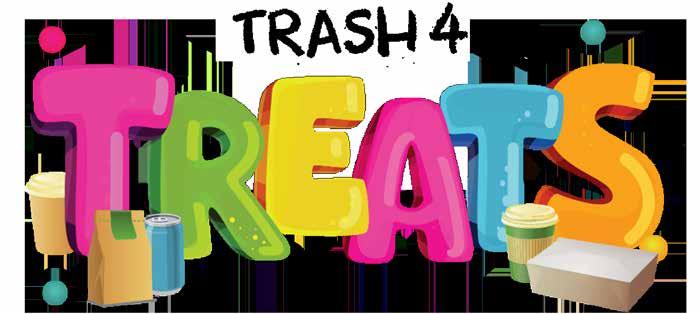
The Metpac-SA Trash 4 Treats initiative, a nationwide campaign teaching primary school learners in disadvantaged communities the value of recycling, is gearing up for its 2025 launch.

Led by Metpac-SA, South Africa’s industry body for metal packaging, in partnership with the Greater Tygerberg Partnership (GTP), this engaging yet impactful initiative is proving that partnerships can drive meaningful change for learners, schools, and the environment.
Starting in the 2025 academic year, the partnership with GTP will work with 20 primary schools across the Western Cape, challenging learners to collect and sort as much recyclable waste as possible. Learners who collect cans and tins are rewarded with treats, while their schools compete for their share of the R30,000 prize money to fund crucial upgrades, offering tangible benefits that go beyond environmental awareness.
Monique Muller, Project Manager at the GTP, emphasised the importance of the initiative: “Trash 4 Treats is a brilliant example of what can be achieved when organisations come together with a shared vision. We are not just teaching kids about recycling; we are showing them how small actions can have a big impact:

The success of Trash 4 Treats is a testament to the power of collaboration. Since launching in 2019, the initiative has expanded its reach from the original ten schools to a total of 65 schools nationwide. By joining forces with Metpac-SA, the GTP is ensuring that this initiative does not just educate—it empowers.
Eleven schools have already secured their spots, leaving nine positions open for new entrants. To ensure no school misses out, the campaign is calling on communities to nominate disadvantaged schools in need that could benefit from this transformative initiative. Schools themselves can also apply to participate.
Communities and schools can nominate or apply by 7 February 2025 by sending an email to Monique Muller, project manager at GTP – monique. muller@gtp.org.za.

In a time where sustainability is more critical than ever, initiatives like this demonstrate that practical, scalable solutions exist. By starting with children and schools, a strong foundation is being built for a cleaner, greener and healthier future.
To learn more about other GTP waste initiative or to get more information visit
Submitted by Nadea Hearn, Get-Published


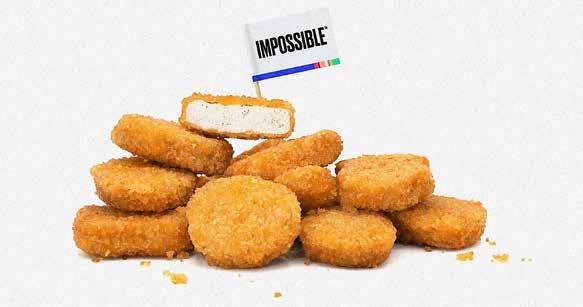
Grandma’s attic can be a treasure throve. Many old things having been piled there for many years. But that is not the only place!

Remember Indiana Jones and the Ark? Where at the ending scene the ark is crated and stored in a warehouse somewhere? To be forgotten among the inventory of all kind of other things?
One wonders if that can be? Can such important things really go ‘missing’? lost in the archives or warehouse?
I found three ‘fun’ things that just got ‘discovered’ (from CNN and BBC).
The first one is from here
“David Carpenter, a professor of medieval history at King’s College London, told CNN Thursday, recounting the moment he made the discovery.
“I finally came to Harvard Law School manu-

script number 172, clicked on that, expecting to see a statute book. And what I saw… was an original of the 1300 Magna Carta,” Carpenter said.”
Harward bought it decades ago for $27-50. And then it got filed away as an ‘old copy’ – well it was an original, 700 years old and exactly the right stuff.
BBC has this.
“An intriguing sequel to the tale of Merlin has sat unseen within the bindings of an Elizabethan deeds register for nearly 400 years. Researchers have finally been able to reveal it with cutting-edge techniques.
It is the only surviving fragment of a lost medieval manuscript telling the tale of Merlin and the early heroic years of King Arthur’s court.”
It gets even better here.

“A rare hand-written copy of one of the most famous love poems ever written has been discovered after hundreds of years.

Dr Leah Veronese uncovered the version of William Shakespeare’s Sonnet 116 tucked away in a 17th Century poetry collection at the University of Oxford.
Dr Veronese found the sonnet featured in a collection of manuscripts which contains a selection of texts from different authors on various subjects.
“When I looked in the catalogue (originally compiled in the 19th Century) the poem was described, not inaccurately, as “on constancy in love” – but it doesn’t mention Shakespeare.”
But it was!

We added two new exhibitions to our collection on the floor. The 4IR and Mirror Maze exhibitions
The 4IR exhibition currently hosts the Humanoids (two small ones and the big one called Pepper), Virtual reality Station, Augmented Reality and the interactive displays integrated with of a number of TV screens.
This concept is through the touch screen located at the entrance to the center. Interactive display section has been created where visitors are encouraged to use traditional touch screens to immerse themselves in games and content around Science Technology Engineering and Arts and Mathematics (STEAM).

Children are provided with the opportunity to play games to train their analytical ability, improve their ability to solve puzzles and chal-

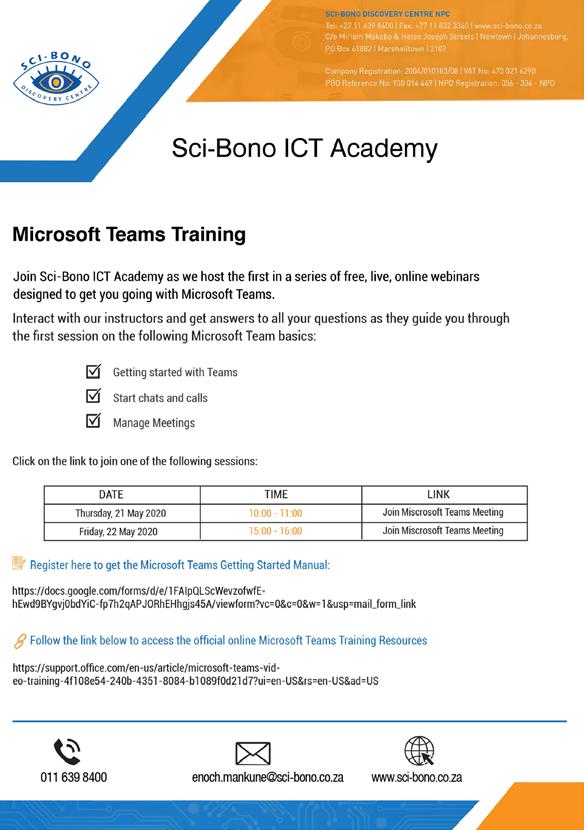
lenges. They are also challenged to explore more traditional content style, such as exploration of subjects including how Artificial Intelligence works, Machine Learning, how data transfers over networks etc.
While traditional science teaching has complex challenges around logistics, safety and costs. VR has none of these limitations. Experiments are done as often as needed with no physical costs of materials or safety concerns. Students can learn about physics and chemistry, life science etc. in a safe environment. Within VR learning occurs without any distract but with full immersion. Learning and understanding mathematics becomes easier and more fun inside of VR due to the nature of games and how they are designed.
This is designed to make learning and exploration real fun especially for little ones. Wide learning opportunities exist through this exhibition, children have many prospects to learn on, e.g. google earth exploration experience.
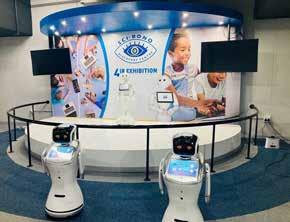
With Google Earth VR, children can travel to almost any place in the world. They can fly all over the world and explore any city, any monument and landmark anywhere in the world.The exhibition has two different types of humanoids the small one (called Sanbot Max and the Bigger one called Pepper).
The Sanbot Max robot was designed to be implemented into numerous kinds of business scenarios, providing customers and staff members with intelligent and efficient services.
Pepper is a semi-humanoid robot, which means that a human has to control it. It is designed with the ability to read emotions. Pepper recognizes faces and basic human emotion.

Did you know that the Clubhouse has three certified drone pilots?
They also have 10 DJI Tell drones that they will used for their drone course.
They are currently putting together content for the said course.
In addition, the Clubhouse offers programmes such as Teach Fundamentals of drones, real-life applications of drones: namely surveillance using object identification and tracking to videography for commercials and other media use.
This includes python programming that covers drone automation.



A mirror is an object that reflects an image. Light that bounces off a mirror will show an image of whatever is in front of it, when focused through the lens of the eye or a camera.
Mirrors reverse the direction of the image in an equal yet opposite angle from which the light shines upon it. This allows the viewer to see themselves or objects behind them, or even objects that are at an angle from them but out of their field of view, such as around a corner.

Natural mirrors have existed since prehistoric times, such as the surface of water, but people have been manufacturing mirrors out of a variety of materials for thousands of years, like stone, metals, and glass. In modern mirrors, metals like silver or aluminum are often used due to their high reflectivity, applied as a thin coating on glass because of its natu- rally smooth and very hard surface.
A maze is a path or collection of paths, typically from an entrance to a goal. The word is used to refer both to branching tour puzzles through which the solver must find a route, and to simpler non-branching patterns that lead unambiguously through a convoluted layout to a goal. The pathways and walls in a maze are typically fixed, but puzzles in which the walls and paths can change during the game are also categorised as mazes or tour puzzles Mirror Maze
The mirror maze itself is a pattern, combining several characteristics of geometric patterns: repetition, symmetry and tessellation using repeated equilateral triangles. These triangles fit together without any gaps or overlaps, creating a tessellation. Mirrored surfaces all around reflect the pattern so that it repeats and appears infinite.

9 June 2025 – The Allan Gray Orbis Foundation, a member of the Allan & Gill Gray Philanthropies, has officially opened applications for its annual High School Scholarship Programme. Eligible Grade 6 learners from across South Africa are encouraged to apply.
The High School Scholarship is dedicated to nurturing entrepreneurial potential among the youth, with the goal of cultivating confident scholars equipped with entrepreneurial thinking, leadership qualities and a drive to create meaningful solutions for South Africa’s most pressing social and economic challenges.
To be successful recipients of this Scholarship, Grade 6 learners must demonstrate an interest in entrepreneurship and the desire to pursue it as a career. Successful recipients will receive funding to attend a top-performing partner high school, alongside comprehensive support designed to develop their entrepreneurial talents and potential.
We are looking for Grade 6 learners who:
• Demonstrate academic excellence and leadership potential
• Show signs of entrepreneurial thinking
• Come from financially disadvantaged backgrounds
Scholarship Application Criteria:
• Applicant must be in Grade 6 in 2025 to apply
• Applicant must not be older than 12 years of age and not younger than 11 years of age in Grade 6 (Candidates must be born in 2013 and 2014)
• Applicant must obtain a minimum 70% average for English and Mathematics in Grade 5 end of the year and Grade 6 midyear examinations
• Applicant must be a South African citizen
• Clearly demonstrate financial need (Household income must not exceed a monthly gross income of R20 000, including business revenue).
What the Allan Gray Scholarship offers:
• Annual entrepreneurial conference
• Regional Entrepreneurial Experience sessions
• Workshops, speaker events and seminars
• Online learning campus
• Programme Officer (mentorship)
• Tuition and boarding
• Uniform, stationery, textbooks, toiletries, casual clothing
• A monthly allowance
• Support for extra murals
Ways to apply:
• Online: Visit www.allangrayorbis.org to complete and submit an application form
• Hand Delivery, Courier or Post: 46 Hof Street, Oranjezicht, Cape Town: 1st Floor, Cliffe Dekker Hofmeyr, 1 Protea Place, Cnr Fredman Dr & Protea Place, Sandton, Johannesburg
Applications close on 15 September 2025 at 17:00 SAST.
This may be for your yonger siblings or family members, but it is publuished here for you to be aware of and to promote this exciting scholarship opportunity.

I found some inspiration here
The human body is really a collection of virus, bacteria, spores and fungi. All kind of things live in and on us.

The best part are vital to us, so that is probably good. But not all those things are!
The article contains some new research. It is a known fact that some fungi can cause severe and deadly brain infections. If they can enter the brain that is.
There is a catch here: the best part of all fungi that can harm us are killed off by our immune system very fast. Good! And the brain itself has a separate defense: the bloodbrain barrier. In essence: preventing harmful fungi to even enter the brain.


Why do we see more cases now, suddenly? I quote: “This is due to a growing number of people with weakened immune systems, [..], partly because of the global spread of the immune-crippling virus HIV, especially in parts of Africa but also due to rising use of immune-suppressing medications in cancer patients and organ transplant recipients.
“The more of these immune-modulating drugs we use, we’ll see more of these fungal infections”.
So, active treatment of one thing can now lead to spread of harmful fungi. Bad news really, but we cannot avoid it.
It is now realized that these infections are perhaps more frequent than previously thought. The article mentions that some diseases like Alzheimer’s may have been mis-diagnosed as it could be a fungus infection.
Even if a fungal brain infection is detected, it is often hard to get medication into the brain. The brain’s blood-brain barrier may prevent the medication to get there. That means we are looking at mortality rates of 90%. Also because the fungi can quickly adapt and counter the medication.


The good news is that the majority of fungi in and on us are the ‘good’ ones: They stave off other microbes and help heal wounds and so on.
As humans we live in a symbiotic relationship with a lot of ‘things’ crawling on us. That is a part of being human!

Great news for matrics across South Africa as they gear up for their pivotal preliminary examinations! AVBOB has just released the latest edition of its acclaimed STEP 12 Examination Preparation Guides online.

What is AVBOB STEP 12?
Launched in 2022, this ground-breaking educational programme aims to enhance Grade 12 learners’ exam readiness across all 11 official written languages, covering each of the three language exam papers, for both Home Language and First Additional Language.
Unlike conventional study guides, AVBOB STEP 12 zeroes in on exam preparation, ensuring learners understand exactly how to approach exam questions effectively. The guides demystify mark allocation; teach essential time-management strategies; and empower learners to select questions as well as plan and structure answers with confidence. Through example questions and model answers, they help learners develop the skills they need to tackle exams successfully.
What’s more, they are completely FREE.
What is new in the 2025 edition?
The guides have undergone refinements and additions based on valuable input from the Department of Basic Education (DBE) and frontline educators, who continue to highlight the impact of the initiative.
“We consistently hear from both teachers and learners about how beneficial these guides are. It inspires us to keep innovating and enhancing our content,” says Dr Adriaan Coetser, Subject Advisor-in-Chief for AVBOB STEP 12, adding that updates are driven by ongoing Curriculum Assessment Policy Statements (CAPS) alignment and constructive feedback. “Each year’s additions and updates mean better, more comprehensive examination preparation guides to help our matrics achieve their dreams.”
Key updates for 2025 include additional examples in critical sections across the suite of guides as well as more detailed answer and essay planning guidance, enriched content on language aspects, additional examples in the glossary of literary terms, and deeper insights into creative writing (with a newly added section containing example topics).
It’s crucial to ensure that every Grade 12 learner, teacher and parent nationwide benefits from this vital resource. The transformative potential of public-private partnerships like this in education should not be underestimated. It is up to all of us to share the message that these guides are out there and cost nothing.
We encourage everyone to download, use and distribute them freely.
Looking ahead, AVBOB hopes to see similar collaborations emerging to support matrics across subjects beyond languages.
How can you get your AVBOB STEP 12 guides?
The FREE, updated AVBOB STEP 12 Examination Preparation Guides are available for download at www.avbobstep12.co.za.
Spread the news!
The National Student Financial Aid Scheme (NSFAS) is a government entity under the Department of Higher Education and Training (DHET)
Supports access to and success in, higher education and training for students from poor and working-class families who would otherwise not be able to afford the cost of studies at a public university or Technical and Vocational Education and Training (TVET) college.
•Provides financial aid to eligible students who are studying or plan to study at any of the 50 TVET colleges or the 26 public universities in South Africa
•Identifies students who qualify for the bursary
•Provides bursaries to students
• All South African citizens
• All SASSA grant recipients
• Applicants whose combined household income is not more than R350 000 per annum
• Persons with disabilities with a combined household income of not more than R600 000 per annum
• Students who started studying at a university before 2018 and whose household income is not more than R122 000 per annum
What does the NSFAS bursary cover?
• Registration
• Tuition
• Book allowance
• Accommodation allowance
• Transport allowance
• Food allowance
• Personal care allowance
Does the NSFAS bursary offer any additional support for students with disabilities?
Yes, NSFAS further supports funded students with disabilities through an additional allowance that covers:
• Medical assessments
• Assistive devices
• Human support to cover for the cost of a caregiver, guide dog, scribe or tutor.
How, where and when can one apply for NSFAS?
The 2021 application season will be communicated through media, social media and the NSFAS website www.nsfas.org.za.
Applications are submitted online through the NSFAS website: www.nsfas.org.za
To apply for NSFAS funding students must have a registered myNSFAS account If you plan to study in 2021 and require support from NSFAS, you may open your myNSFAS account now to keep updated with the latest funding information.
Connect with us using the following channels:
NSFAS Connect: www.nsfas.org.za and log into your myNSFAS account
NSFAS Connect gives you access to quick facts and frequently asked questions. Applicants and students can also submit and track a query for further assistance.

Disney is now set to open its seventh theme park. This one in Abu Dhabi (Dubai!). All of this from here.

It is remarkable as it is now like 15 years since the last one opened. And theme parks still account for 59% of the revenue.
It will of course be more hi-tech than anything and the Disney creative staff (they are called Disney imagineers) are aiming at having it all done for opening in 2030. It takes time to get it all sorted.
One might ask – why Abu Dhabi? I quote: “Both Abu Dhabi and Dubai airports have ambitious plans, with their vision as a pair of world-leading airports connecting a third of the world’s population within a four-hour flight.
That includes the 1.4 billion
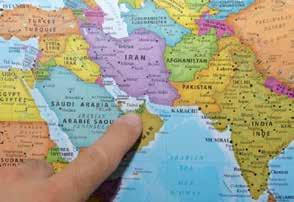
people living in India, many of whom would be able to travel a shorter distance to Abu Dhabi than to Disney’s parks in Shanghai or Hong Kong.” Like that!
Look at the map. The new resort can serve India, parts of China, parts of Europe and so on. And serving one third of the global population? The growing market where money is available? Should be a given!

I quote: “D’Amaro [the developer] said a potential 500 million people in the region have the means to visit a Disney theme park. That easy access, coupled with the country’s future-oriented development, factored into Disney’s decision”.
The actual location will be on Yas Island, where a range of hotels and parks are already located.
I Quote: “Disney’s resort will be located on Yas Island, where Miral has developed other resorts including SeaWorld YAS Island Abu Dhabi, Yas Waterworld, and Warner Bros. World, built under license by CNN’s parent company, Warner Brothers Discovery.


Yas Island is within a 20-minute drive of downtown Abu Dhabi and a 50-minute drive from Dubai. It is home to several existing theme parks, a golf course, marina, waterfront and mall, with 165 eateries across the island.”
They will be in good company!

We surely know Disney from the theme parks, but there is so much more.
The revenue was some $23 billion last year, with an operating profit of $4,4 billion. That is a lot of money.

Disney+ and Hulu are the streaming services. Is it big? streamers grew to 126 million subscribers. Hulu, meanwhile, added 1.3 million subscribers. So yes. They are a force to be reckoned with.
Disney Sports is another big revenue stream: $4,5 billion last year.
… and then there is the Disney cruise ships! Those are said to bring in some $3 billion a year.
But where did it start?
Disney land – Anaheim, California It all started when Walt wanted to create a tourist attraction next door to his Burbank studios. A place where people could go visit and see and remember all the things that were in the movies and more.


That was in 1953. But he soon realized that the site he had imagined to house the park was way too small. So the whole thing shifted to a new plot in Anaheim.
Finally, it opened its doors in 1955. And the concept has not changed much, but the ‘props’ have.
Was the opening then a great success? Oh no! I quote from wiki: “Traffic was delayed on the two-lane Harbor Boulevard. Famous figures who were scheduled to show up every two hours showed up all at once.

The temperature was an unusually high 38 °C, and because of a local plumbers’ strike, Disney was given a choice of having working drinking fountains or running toilets. He chose the latter, leaving many drinking fountains dry.
This generated negative publicity since Pepsi sponsored the park’s opening; disappointed guests believed the inoperable fountains were a cynical way to sell soda, while other vendors ran out of food.

The asphalt that had been poured that morning was soft enough to let women’s high-heeled shoes sink into it. Some parents threw their children over the crowd’s shoulders to get them onto rides, such as the King Arthur Carrousel.
After the extremely negative press from the preview opening, Walt Disney invited attendees back for a private “second day” to experience Disneyland properly”.
however, the castel is there as an integral part of it all.
The characters are still walking the parks, like Mickey and snow-white and many more.


So we all know that eating and drinking in space requires some different food items. Looking at how it used to be is rather … ugly. Yes, the afternoon tea will not stay in the cup and so on, but that is only part of the challenge.
The cost of preparing food for astronauts is also a factor.
It may not be fine dining and five-star Michelin, but it is not inexpensive either.
I found an interesting article here.
The article mentions that meals can be some $20,000 per meal pr day. I don’t get that and the article does not specify why it is so expensive.
However, the article does get to the point: flying food off to space might be a bit expensive. The solution is obvious: grow food in space.

Let us just look at a typical menu for an astronaut. However, the menu may vary a lot based on nationality of the astronaut.
This is from Wiki.
The Chinese space station is the

newest and the most modern of them all. This is also evident in the food selection. Wiki says: “At Tiangong space station, meals consisting of 120 different types of food, selected based on astronauts’ preferences, are stored aboard. Staples including shredded pork in garlic sauce, kung pao chicken, black pepper beef, yuxiang shredded pork, pickled cabbage, and beverages, including a variety of teas and juices” – not much different from the menu at any good Chinese restaurant.
Commercial firms Lavazza and Argotec developed an espresso machine, called ISSpresso, for the International Space Station. It can also brew other hot drinks, such as tea, hot chocolate, and broth.
The Japan Aerospace Exploration Agency (JAXA) have developed traditional Japanese foods and drinks such as matcha, yōkan, ramen, sushi, soups, and rice with ume for consumption in orbit.
All of this is perfect. There are rules for what food can be flown into space and how to package it and so on. All good of course.

But it does not address the real problem: flying tons of food things into space is expensive in itself.

Here comes the solution: lab-grown food. We have had several articles about the new type of food we will see creeping into our daily day. Meat-free meat, finless fish are words we will see more often.

The article is looking at this new technology to feed astronauts and the reason is simple: the cost.
I quote: “Lab-grown food involves growing food ingredients, such as protein, fat and carbohydrates in test tubes and vats and then processing them to make them look and taste like normal food.

Lab-grown chicken is already on sale in the US and Singapore and lab grown steak is awaiting approval in the UK and Israel.
““We could start off simply with protein-enhanced mashed potatoes on to more complex foods which we could put together in space,” he tells me.
“But in the longer term we could put the lab-grown ingredients into a 3D printer and print off whatever you want on the space station, such as a steak!”
It somehow feels a bit ‘left field’, but can it be done?
I quote: “Imperial College’s master chef [..] Jakub Radzikowski is the culinary education designer tasked with turning chemistry into cuisine.
For now, instead of lab-grown ingredients, Jakub is using starches and

proteins from naturally occurring fungi to develop his recipes. He tells me all sorts of dishes will be possible, once he gets the go-ahead to use lab-grown ingredients.
“We want to create food that is familiar to astronauts who are from different parts of the world so that it can provide comfort.
“We can create anything from French, Chinese, Indian. It will be possible to replicate any kind of cuisine in space.”
Today, Jakub is trying out a new recipe of spicy dumplings and dipping sauce. He tells me that I am allowed to try them out, but taster-in-chief is someone far more qualified: Helen Sharman, the UK’s first astronaut, who also has a PhD in chemistry.
Dr Sharman’s more important observation was about the science. Labgrown food, she said, could potentially be better for astronauts, as well as reduce costs to the levels required to make long-term off-world habitation viable.
“Astronauts tend to lose weight because they are not eating as much because they don’t have the variety and interest in their diet,” she told me.
“So, astronauts might be more open to having something that has been cooked from scratch and a feeling that you are really eating wholesome food.”
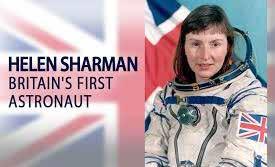
All well and good: but why even try to make it look like traditional food? We can just as well design a dish with a new taste – something that does not look like anything we have ever eaten before. Why not?
We all know the drum. Like as in we have all drummed along some time. But we also see the word percussion instruments instead of just ‘drum’.
Is the difference just to be sophisticated? Well, maybe. But persuccion instruments are so much more.
Let us have a look at the more unusual ones.(all from Wiki of course).
The bock-a-da-bock is a musical instrument in the percussion family consisting of two small cymbals attached to each other by a set of metal tongs.


The flexatone or fleximetal is a modern percussion instrument (an indirectly struck idiophone) consisting of a small flexible metal sheet suspended in a wire frame ending in a handle.
A woodblock is a small slit drum made from a single piece of wood. The term generally signifies the Western orchestral instrument, but may also refer to the Chinese woodblock. In ragtime and jazz music, it is also known as the clog box or tap box.


The lion’s roar is a membranophone instrument that has a drum head and a cord or horsehair passing through it.[1] It gets its name from the sound it produces, which closely resembles a lion’s roar.
A glass harp is a musical instrument made of upright wine glasses. It is played by running moistened or chalked fingers around the rim of the glasses. Each glass is tuned to a different pitch, either by grinding each goblet to the specified pitch, in which case the tuning is invariable, or by filling the glass with water until the desired pitch is achieved.


Crotales sometimes called antique cymbals, are percussion instruments consisting of small, tuned bronze or brass disks. Each is about 10 cm (4 in) in diameter with a flat top surface and a nipple on the base. They are commonly played by being struck with hard mallets.
And a whole symphony:
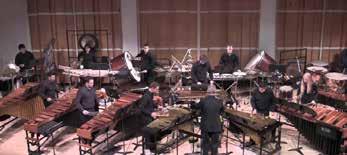


Sketch

When a young girl’s sketchbook falls into a strange pond, her drawings come to life, unpredictable, chaotic, and dangerously real. As the town unravels, she and her brother must track down the creatures before they leave permanent damage. Their father, racing to find them through the fallout, must navigate a town in crisis to reunite his family and stop the disaster they never meant to unleash.
Screening: 8 August 2025 August has got some some better
On the rugged isle of Berk, a Viking boy named Hiccup defies centuries of tradition by befriending a dragon named Toothless. However, when an ancient threat emerges that endangers both species, Hiccup’s friendship with Toothless becomes the key to forging a new future. Together, they must navigate the delicate path toward peace, soaring beyond the boundaries of their worlds and redefining what it means to be a hero and a leader.


Already showing


August is still winter, but just maybe we can get the usual hot and dusty August back. No more cold days, please!
We have a few things thta may warm you up:

National Cat Day is celebrated in various countries. In some areas it is an awareness day to raise public awareness of cat adoption.
In Japan, National Cat Day is celebrated on February 22, as the date resembles the words “nyan nyan nyan” (meow meow meow). The date was decided on in a poll between cat-keepers by the Executive Cat Day Committee in 1978. It is celebrated with people posing with photographs of themselves with their pet cats, and businesses selling cat-themed cuisine.
In the United Kingdom, there is also a National Black Cat Day which is marked on October 27. It was established in 2011 by animal welfare charity, Cats Protection, who found that black (and black-and-white cats) took around a week longer to home than cats of other colours.
They attributed this to black cats’ perceived connection with bad luck and the supernatural, and the fact that the cats do not photograph well on social media



International Left Handers Day is an international day observed annually on August 13 to celebrate the uniqueness and differences of left-handed individuals.
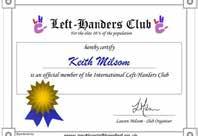
The day was first observed in 1976 by Dean R. Campbell, founder of the Lefthanders Club. This day was established to raise awareness about the challenges and experiences faced by left-handed individuals in a predominantly right-handed world.
The holiday celebrates left-handed people’s uniqueness and differences, a subset of humanity comprising seven to ten percent of the world’s population.
The day also spreads awareness on issues faced by left-handers, e.g. the importance of the special needs for left-handed children, and the likelihood for left-handers to develop schizophrenia.

Several media outlets and commercial associations have made one-off posts and compilations of accomplished left-handed people in recognition of the holiday.
Hola MaHigh-School is YOUR magazine. That is why we would love to see students writing for students about student life and everything of importance to a student in any grade10-12 across the country.

What is required? That is easy:
You have to be in grade 10-12somewhere
Impeccable in your preferred language-and that might not be English. We try to be more than just English.
Passionate about your topic of choice - no dull articles here.
Do you get anything out of it?
Well, not money, sorrry. BUT if we publish your articles you will have:
Your bio in a commercial magazine A photo of yourself
You can put it all on your CV you can use us as a reference




My name is Rofhiwa and I love to write. I have used my skills to express my thoughts on international dealings of the world which have been published in Hola MaHigh-School. It has paid off, not only is my work printed for young people in the country to read, but it also contributed to me gettng a bursary from CNBC-Africa to do my post-graduate studies. Would be a lot harder to get by if I didn’t have a platform like Hola MaHigh-School.
Time to look at funding for your future after high-school. Those dreaded words like bursaries and grants and so on.
NSFAS is still there and it is the biggest one of them all - despite its challenges.
... but it is not the only one! look at the private institutions as well. There are plenty of them and they are there to assist.
We have a lot of other things: career in the air industry. Much more than being a pilot! read more about exciting jobs.
i still want to find conspiracies. Let us see if I succeed in that. I love them!
Tech? international? (no. Not anymore Trump!) but something interestng.
Report back from NSTF awards will be there.
Until next time!




How long is 20 seconds?
Hum the first verse of our national anthem: Nkosi Sikelel’ iAfrika
